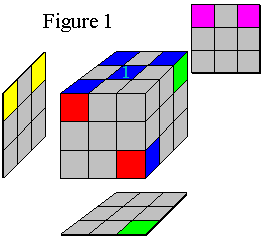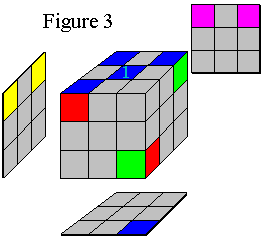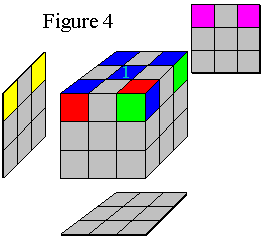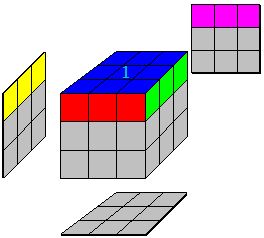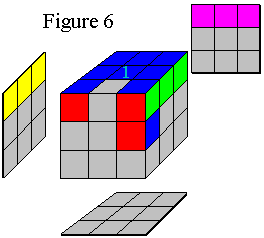Solving the First side of the Cube
There are many ways to solve the first side of the cube, and this page demonstrates some of the techniques. The first step is to pick a color to be your first side (blue in the following figures). Next, move the four corner pieces containing a blue side into position, being sure that adjacent corner pieces have the same side color in addition to being blue. The moves and figures in Step 1 will help you accomplish this. Finally, fill in the gaps between the corner pieces with the appropriate edge pieces; Step 2 helps illustrate this.
Legend
- U stands for the top (Upper) side,
- D stands for the bottom (Down) side,
- L stands for the left hand side,
- R stands for the right hand side,
- F stands for the front side,
- H stands for the middle horizontal slice between the top and bottom sides. In the following figures it always contains the red, green, pink, and yellow middle-center pieces.
The numbers following each move describe which direction to rotate the side: 1 for one quarter turn clockwise, -1 for one quarter turn counterclockwise, and 2 for two quarter turns (half way around).
For horizontal slice H, look at the cube through the top (side 1) to determine the clockwise direction.

